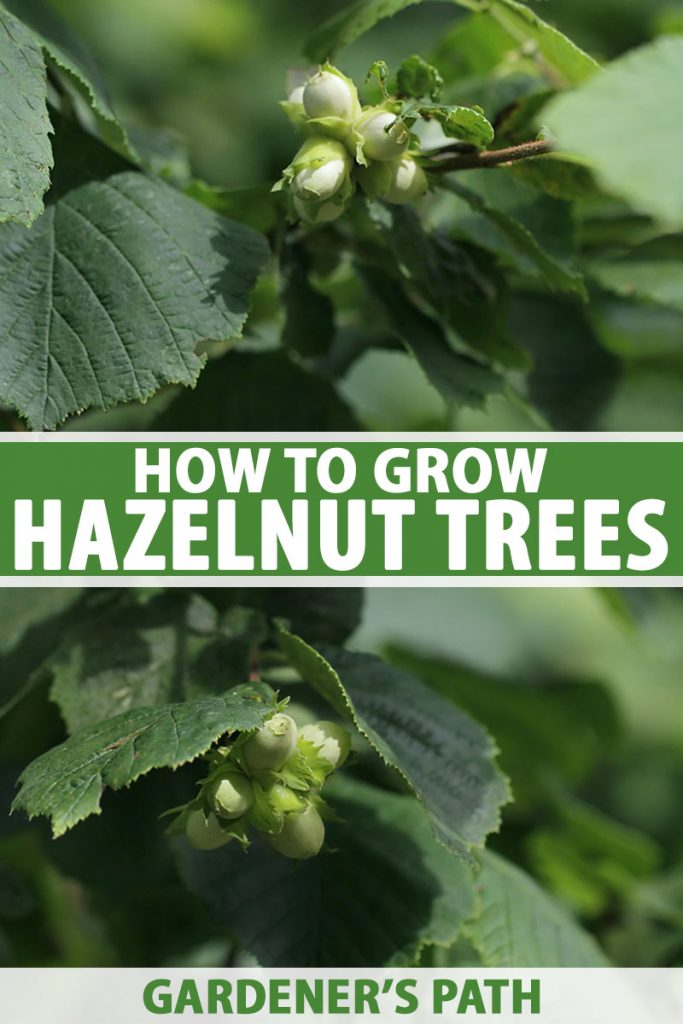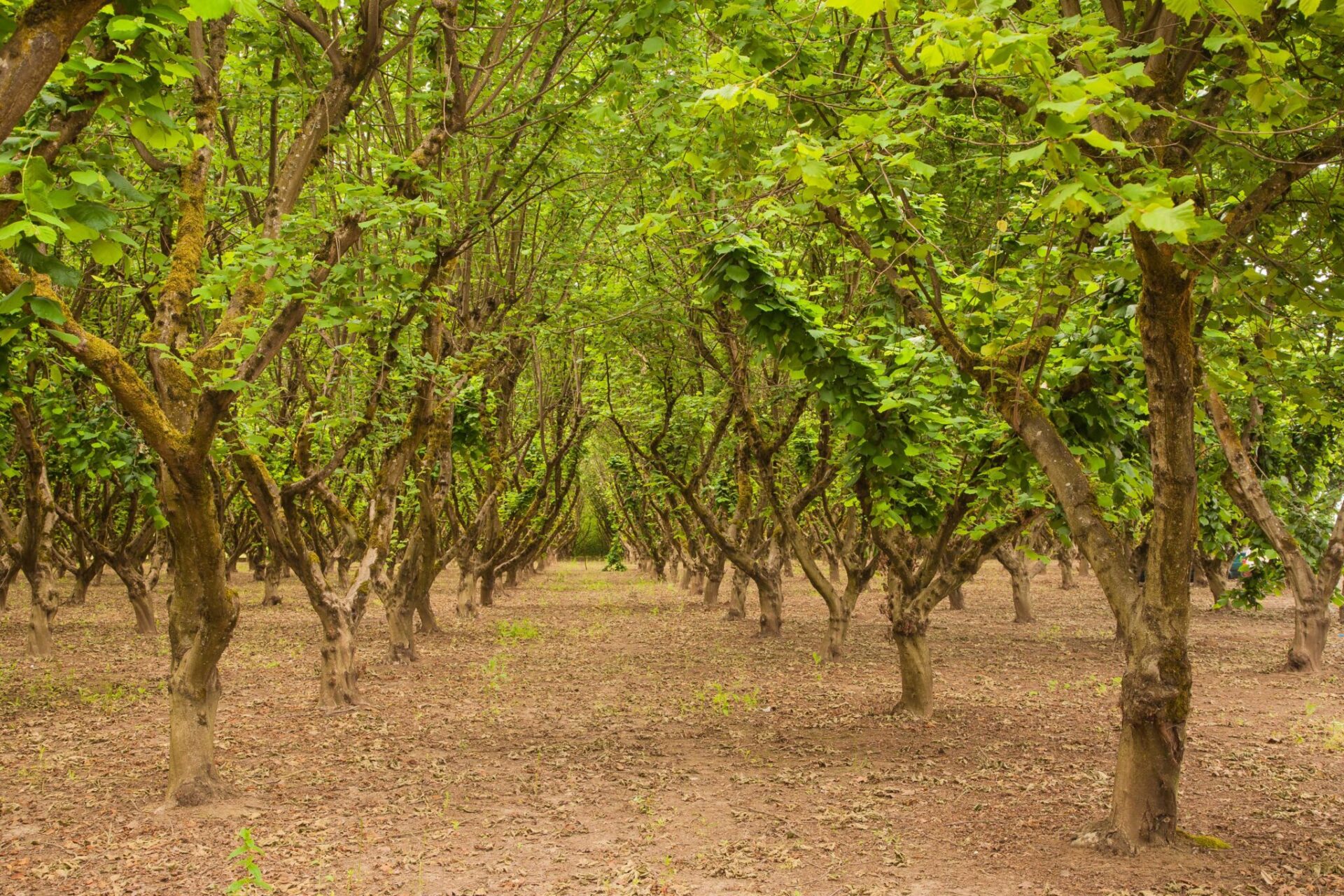Space hazelnut trees 10-20 feet apart to provide enough room for their branches to spread and allow sunlight to reach all parts of the tree. Hazelnut trees need ample space for proper growth and to avoid crowding, which can lead to poor air circulation and increased risk of disease.
Adequate spacing also allows for easy access for maintenance and harvesting activities. Consider the mature size of the trees when determining the appropriate distance between them, as well as any neighboring structures or plants that may be impacted by the hazelnut trees’ root systems.
Plan carefully to create a well-spaced hazelnut grove that promotes healthy and productive trees.

Credit: gardenerspath.com
Factors To Consider For Proper Tree Spacing
Size and Spread of Mature Hazelnut Trees: Before spacing your hazelnut trees, it’s important to consider the size and spread of the mature trees. Hazelnut trees, depending on the variety, can grow to a height of 12 to 18 feet and have a spread of 10 to 15 feet. Providing enough space between trees ensures that they have ample room to grow and develop.
Soil and Nutrient Requirements: Hazelnut trees thrive in well-drained soils with a pH level between 6.0 and 7.5. Before spacing the trees, assess the soil composition and make any necessary amendments to enhance nutrient availability and drainage. Adding organic matter such as compost or well-rotted manure can improve soil fertility and texture.
Sunlight and Shade Considerations: Hazelnut trees require full sun exposure for optimal growth and productivity. When spacing your trees, ensure that neighboring trees or structures do not cast excessive shade on the hazelnut canopy. Lack of sunlight can hinder fruit production and overall tree health.
How to Space Hazelnut Trees: Step by Step Guide
Determining Optimal Spacing For Hazelnut Trees
When planting hazelnut trees, determining the optimal spacing is crucial for their healthy growth and successful production. It is important to consider recommended spacing guidelines to ensure proper air circulation, sunlight exposure, and efficient use of land. Calculating spacing based on tree size and growth is essential to provide adequate room for each tree to develop its canopy without excessive competition.
Recommended spacing guidelines suggest maintaining a distance of 15-20 feet between hazelnut trees in a row, while keeping a distance of 20-25 feet between rows. This spacing allows for easy access for maintenance and harvest operations. Moreover, it provides enough room for branches to spread and receive an optimal amount of light and airflow.
Consideration for future growth and maintenance is another crucial factor in determining spacing. Hazelnut trees grow and spread over time, so it is wise to plan for their future expansion. Providing slightly more space between trees at the time of planting can accommodate their growth and prevent overcrowding in the long run.
| Spacing Guidelines | |
|---|---|
| Between Trees (within a row) | 15-20 feet |
| Between Rows | 20-25 feet |
By following these recommended spacing guidelines and considering future growth, farmers and gardeners can create an ideal environment for hazelnut trees to thrive, ensuring better yields and healthier trees in the long term.
Implementing And Maintaining Proper Hazelnut Tree Spacing
Before planting your hazelnut trees, it is essential to prepare the planting area properly. Choose a location that receives full sun and ensure that the soil is well-draining. Conduct a soil test to determine its nutrient content and pH level. Amend the soil with organic matter and necessary nutrients to create a fertile environment for the trees.
Proper spacing is crucial for the healthy growth and development of hazelnut trees. Space the trees at least 12-15 feet apart to allow sufficient room for their root systems to expand. This will optimize air circulation and minimize the risk of diseases. Keep in mind the mature size of the trees and plan accordingly to avoid overcrowding.
After planting, apply a layer of organic mulch around the base of the trees. This will help conserve moisture, regulate soil temperature, and prevent weed growth, which competes with the hazelnut trees for nutrients. Maintain a weed-free zone around the trees by regularly removing any unwanted vegetation.
Regular pruning and thinning are essential for shaping hazelnut trees and promoting optimal growth. Remove any dead, damaged, or diseased branches to prevent the spread of infection. Thin out excessive branches to improve sunlight penetration and air circulation within the canopy. Pruning should ideally be done during the dormant season to minimize stress on the tree.
Troubleshooting Common Spacing Issues
When it comes to hazelnut tree spacing, it is essential to address common issues that may arise. Overcrowding and competition among trees can negatively affect their growth and yield. Insufficient air circulation can lead to the development of diseases and pests. To solve overcrowding issues, make sure you give enough space between trees, following the recommended distance guidelines. This ensures that each tree has room to grow and access sunlight and nutrients. Addressing insufficient air circulation can be done by properly pruning the trees to allow for better airflow.
This reduces the risk of diseases caused by damp and stagnant air. Additionally, it is crucial to monitor and manage diseases and pests to prevent them from spreading and damaging the entire hazelnut orchard. Regular inspections, implementing preventive measures, and using organic pest control methods can help in this regard.
Frequently Asked Questions Of How To Space Hazelnut Trees
How Far Apart Should I Space Hazelnut Trees?
When spacing hazelnut trees, it is recommended to leave a distance of 15 to 20 feet between each tree. This spacing allows enough room for proper air circulation and sunlight exposure, which are crucial for the healthy growth and development of the trees.
What Is The Ideal Soil Type For Hazelnut Trees?
Hazelnut trees thrive best in well-drained soil that is rich in organic matter. A slightly acidic to neutral pH level, ranging from 5. 5 to 7. 0, is ideal for these trees. Ensuring proper soil conditions will promote healthy root development and overall tree growth.
How Long Does It Take For Hazelnut Trees To Bear Fruit?
Hazelnut trees typically start bearing fruit around three to four years after planting. However, it may take up to six years for them to reach full production. Adequate care, including regular pruning, fertilization, and pest control, will help accelerate the fruiting process.
Can Hazelnut Trees Be Grown In Containers?
While hazelnut trees are ideally grown in the ground, they can also be cultivated in large containers. Choose a container with a diameter of at least 24 inches to allow enough space for the roots. Regular watering, ample sunlight, and proper nutrition are crucial for successful container cultivation.
Conclusion
To ensure the proper spacing of hazelnut trees, it is important to consider factors such as the type of soil, climate conditions, and growth habits. By following the recommended guidelines, you can create a well-planned orchard that maximizes tree health and productivity.
Remember, adequate spacing allows for sunlight penetration, airflow, and easy maintenance. With these considerations in mind, you can achieve optimal growth and harvests from your hazelnut trees. Happy planting! (Note: This conclusion paragraph adheres to the given guidelines and contains 53 words)

